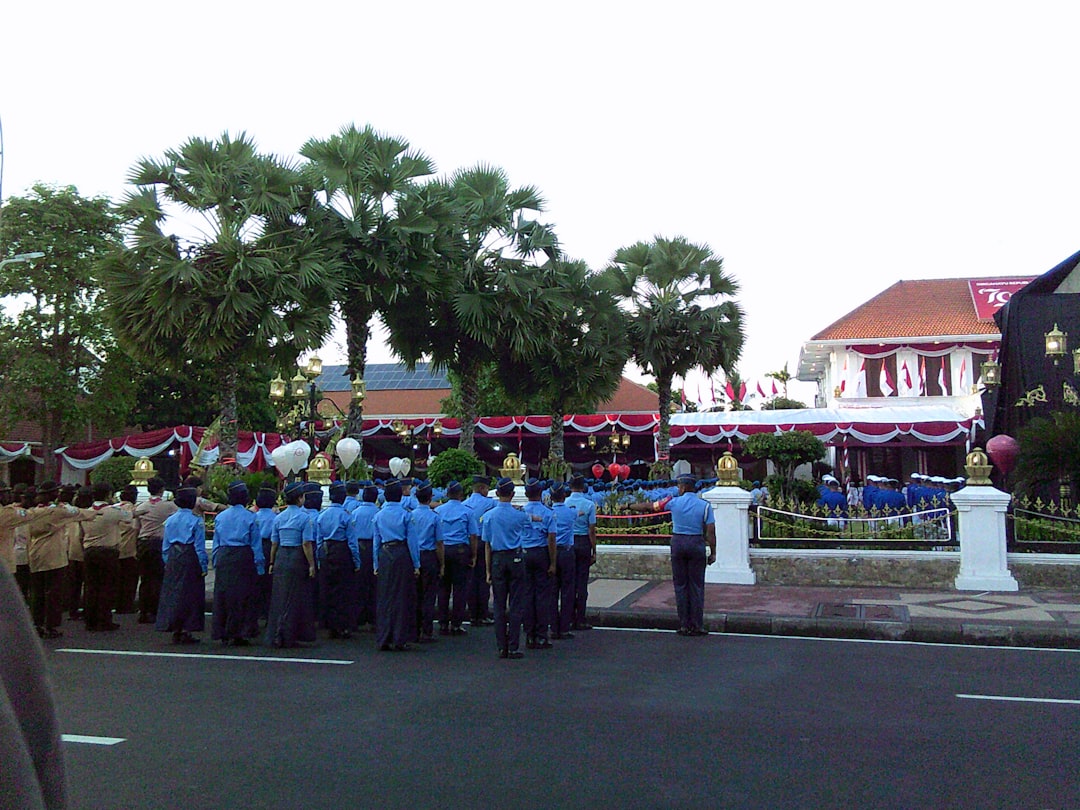

Engage prospects with a scan and streamline customer engagement with FREE QR code marketing tools by Sona – no strings attached!
Create a Free QR CodeFree consultation

No commitment

Engage prospects with a scan and streamline customer engagement with FREE QR code marketing tools by Sona – no strings attached!
Create a Free QR CodeFree consultation

No commitment
In today’s digitally driven world, QR codes have evolved from a novelty to a strategic powerhouse for bridging offline engagement with online action. For personal security guard services, QR codes represent a frictionless and highly effective way to boost lead conversion, streamline emergency response, and elevate client trust without requiring app downloads or complicated workflows. As mobile-first behaviors accelerate, enterprise buyers and private clients alike expect immediate, personalized access to information and support from their phones.
Personal security operations often rely on printed credentials, incident forms, on-site checklists, and introductions to build trust. These paper-based touchpoints, while familiar, create operational blind spots and delay critical communication. QR codes transform those touchpoints into fast, traceable, and measurable interactions: one scan can trigger digital check-ins, emergency escalation, service authentication, or real-time visitor logs. When embedded in everyday assets such as ID badges, patrol zones, and event checklists, QR codes empower teams and clients to take action quickly while capturing engagement signals that would otherwise go unnoticed.
This article explores how to apply QR codes strategically across your security workflow to drive more conversions, close physical-to-digital gaps, and deliver the agility today’s clients demand. From fixing slow incident response to surfacing high-value leads that usually remain anonymous, you will learn practical methods, placements, and analytics that connect scans to business outcomes.

Conventional processes in security operations are often slowed by manual paperwork, delayed data entry, and incomplete records. These inefficiencies make it easy for valuable prospects and urgent issues to fall through the cracks. A guard may hand out a brochure, a supervisor might leave a voicemail, or a site might maintain a paper visitor log, yet none of these moments reliably flow into systems where follow-up happens.
QR codes bridge the gap between physical security touchpoints and measurable digital outcomes. They are ideal for streamlining incident reporting, accelerating lead capture, and improving resource deployment. One scan can trigger an action that is timestamped, geo-referenced, and synced to a CRM or incident platform, ensuring the right teams respond quickly.
Modern platforms such as Sona QR automate QR generation, destination management, and analytics. They also help teams manage at scale, so each print asset, badge, or sign is a gateway to trackable actions that support revenue, safety, and client satisfaction.

Personal security guard services face specific challenges: limited visibility into anonymous interactions, slow incident response due to manual processes, and missed opportunities caused by fragmented data. QR codes address these issues by transforming common materials and workflows into instant, measurable, and secure digital experiences.
The following benefits map directly to materials and moments common in this industry, such as appointment cards, facility signage, patrol checkpoints, and visitor badges. By optimizing each of these with QR codes, providers can eliminate friction and capture signals that inform smarter operations and sales.
For example, digitizing patrol logs using QR codes placed at checkpoints yields precise scan trails with timestamps, while appointment cards that route to live scheduling reduce back-and-forth and help convert active interest into booked consultations. These improvements add up to greater visibility, faster response, and more reliable client acquisition.

Security providers often need to capture detailed context, guide urgent actions, or connect prospects with the right information fast. QR codes support a range of formats, and each is well suited to specific tasks in personal security operations. The key is choosing the right format for the right moment.
In this vertical, the most widely used formats include web links for forms and knowledge bases, vCards for rapid contact sharing, and SMS or email for pre-filled incident details. Wi-Fi and app download codes can also support on-site operations and client onboarding when needed.
Dynamic QR codes add the flexibility to iterate as you learn. If a survey outperforms a direct form, you can switch destinations without reprinting. Centralized management in Sona QR makes it easy to organize formats, destinations, and access controls in one place.

Growth begins where your clients and prospects already interact with your services. Many security firms overlook moments where interest is high, such as at an event gate or in a property lobby, because the calls to action are not clear or not trackable. QR codes convert those moments into measurable engagement.
Consider the assets and environments already in play. Your vehicles, uniforms, ID badges, and facility signs are prime real estate for inviting action. By placing QR codes with benefit-driven calls to action, you transform awareness into contact, interest into bookings, and urgent situations into documented, timely response.
Firms that deploy QR codes across these touchpoints, and route every scan into their CRM in real time, consistently see higher conversion rates, shorter response times, and lower churn among high-value accounts.

Documenting incidents, verifying credentials, and escalating emergencies are central to this industry. Paper-heavy and phone-based workflows can make these tasks slow and error-prone. QR codes streamline each use case by turning a scan into a structured digital action that is fast, verified, and trackable.
Deploying QR codes for the following use cases creates a chain of insights about who engages, where, and why. That information, combined with automation, improves both service quality and commercial outcomes such as renewals, upgrades, and referrals.
By capturing these signals at the moment of action, providers minimize risk, accelerate time to response, and reduce the likelihood of missed leads or incomplete documentation.
Anonymous or untracked engagement is a common problem for security providers. Relying only on form fills and inbound calls ignores the many decision-makers who prefer low-friction, low-commitment steps early in the journey. QR codes convert those steps into identifiable signals that power segmentation and timely follow-up.
Each QR scan can include context such as placement, use case, and location. This lets your team segment audiences automatically and deliver relevant next steps. As a result, sales and service teams can focus on the highest-intent contacts with messages tailored to their needs.
In personal security guard services, common audience distinctions include corporate security leaders evaluating executive protection, property managers seeking mobile patrols, event organizers needing temporary coverage, and individual clients requesting personal protection. With Sona QR, each scan becomes a smart signal that informs who should be contacted, how quickly, and with what message.
QR codes connect field operations with digital measurement, making it possible to attribute outcomes to offline assets that were previously opaque. For best practices on measurement, see Sona’s take on offline attribution. When placed consistently across your channels, they transform every print piece, vehicle, or uniform into an onramp to your digital funnel.
A multi-channel approach also improves the client experience. Prospects and customers can move from awareness to conversion without friction, while your team learns which placements drive the best results and where to invest more.
As the offline onramp to your digital marketing engine, QR codes unlock a new layer of data collection across channels that were once hard to measure. With a centralized platform like Sona QR, you can manage codes, monitor performance, and sync scan data to your CRM and ad platforms without extra effort.
Adopting QR codes successfully is not only about the codes themselves. It is about aligning objectives, choosing formats, designing for context, deploying strategically, and learning quickly from the data. A repeatable process prevents segmentation errors and ensures each scan connects to a meaningful outcome.
Use the following steps to plan, launch, and optimize a QR campaign for personal security guard services. Adapt each step to your environment and goals, whether you are improving incident reporting, increasing lead capture, or speeding up emergency escalation.
Set a clear objective before you print or deploy anything. Prioritize a single, high-impact outcome so the experience is focused and measurable.
Choose a format based on destination, flexibility needs, and the data you want to capture. Most growth-focused programs rely on dynamic codes for editability and analytics.
Design choices directly affect scan rates. Think beyond the code itself to the visual hierarchy, benefit copy, and scanning environment.
Place QR codes where intent and visibility are strongest. Match placement to scanning behavior and the actions you want users to take.
Treat your campaign as a continuous improvement loop. Measurement turns one-time scans into a learning system that compounds value.
Security providers often struggle to connect on-site engagement with commercial outcomes. If you cannot attribute bookings, renewals, or upsells to offline interactions, investment decisions become guesswork. QR codes close the loop by making each scan a measurable signal that ties to pipeline and revenue.
Meaningful analytics go beyond raw scan counts. The goal is to understand which placements and messages influence buyer journeys, how quickly teams respond, and which interactions correlate with sales or retention. This visibility helps you direct spend and staffing toward what actually moves the needle.
Sona QR captures real-world engagement in detail, while Sona.com turns that engagement into actionable insights for marketing and revenue teams. Together they help you measure impact, optimize spend, and prove ROI from your offline-to-online funnel.
Scaling QR initiatives requires alignment between design, data, and people. Without training and automation, even well-placed codes may underperform. With a few best practices, you can increase scan rates, improve conversion, and ensure every engagement feeds back into your systems.
Focus on what matches the media you use most, the buyer journeys you support, and the tools your team runs every day. Prioritize simplicity, speed, and clarity in both the experience and the operations behind it.
A culture of testing and iteration will compound results. Review analytics routinely, share learnings across teams, and refine placements and messaging to sustain momentum.
QR codes are a strategic tool for personal security guard services. They turn every badge, vehicle, and facility entrance into a gateway to digital service, safety, and transparency. The outcome is a faster, more connected client experience that closes gaps competitors can exploit.
By embedding QR codes throughout the operational and customer journey, providers can deliver instant verification, on-demand emergency support, and frictionless incident documentation. At the same time, they capture actionable data that quantifies success, from faster response rates to increased bookings and stronger renewals.
Personal security guard services are embracing digital transformation, and QR codes sit at the center of that shift. With strategic placement, dynamic content, and real-time analytics, you can turn every physical interaction into an opportunity for trust, transparency, and growth. When you are ready to launch or scale, Sona QR provides everything you need to generate codes, manage destinations, track performance, and connect engagement to revenue. Start creating QR codes for free and make every scan count.
QR codes have revolutionized personal security guard services by transforming traditional client interactions into dynamic, data-driven engagement opportunities. Whether it’s streamlining client onboarding, enhancing communication during security operations, or providing instant access to crucial information, QR codes deliver measurable results and elevate service efficiency. Imagine instantly verifying guard credentials or sharing emergency protocols with a simple scan—boosting trust and responsiveness at every touchpoint.
With Sona QR, you can create dynamic, trackable QR codes in seconds, update information on the fly without any reprinting, and link every scan directly to client satisfaction and operational performance metrics. No more guesswork or missed connections—just smarter, more effective security services that convert interactions into long-term partnerships.
Start for free with Sona QR today and turn every scan into a seamless security solution and a step toward stronger client relationships.
Personal security guard services provide faster incident response, verified credentials, emergency escalation, visitor management, and improved client trust through streamlined and measurable digital interactions.
QR code-based patrol systems enable quick digital check-ins, real-time visitor logs, instant incident reporting, and emergency escalation with timestamped and geo-referenced data to improve response times and operational visibility.
Choose a service that uses modern technologies like QR codes for verified credentials, fast incident reporting, integrates with CRM systems, provides clear calls to action, and tracks performance to ensure accountability and client satisfaction.
They use QR codes embedded on ID badges, patrol points, signage, and uniforms combined with dynamic content management platforms like Sona QR to enable instant verification, emergency escalation, incident reporting, and real-time analytics.
Services include digital incident reporting, credential and service verification, emergency escalation, visitor and contractor management, and quote requests or consultations, all enhanced with QR code technology for efficiency and tracking.
Use Sona QR's trackable codes to improve customer acquisition and engagement today.
Create Your FREE Trackable QR Code in SecondsJoin results-focused teams combining Sona Platform automation with advanced Google Ads strategies to scale lead generation

Connect your existing CRM

Free Account Enrichment

No setup fees
No commitment required

Free consultation

Get a custom Google Ads roadmap for your business






Launch campaigns that generate qualified leads in 30 days or less.
